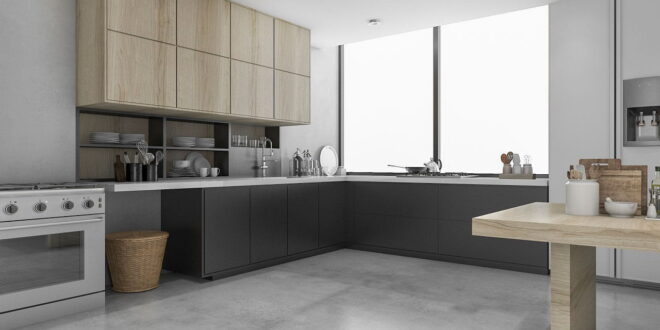Cement Tile Kitchen Floor: A Timeless Guide to Style, Durability, and Installation
The kitchen, the heart of the home, deserves a flooring that’s both beautiful and resilient. While many materials compete for attention, cement tiles offer a unique blend of timeless elegance, exceptional durability, and surprising versatility. This comprehensive guide delves into the world of cement tile kitchen floors, exploring their history, benefits, styles, installation, maintenance, and everything you need to know to decide if they’re the perfect choice for your culinary space.
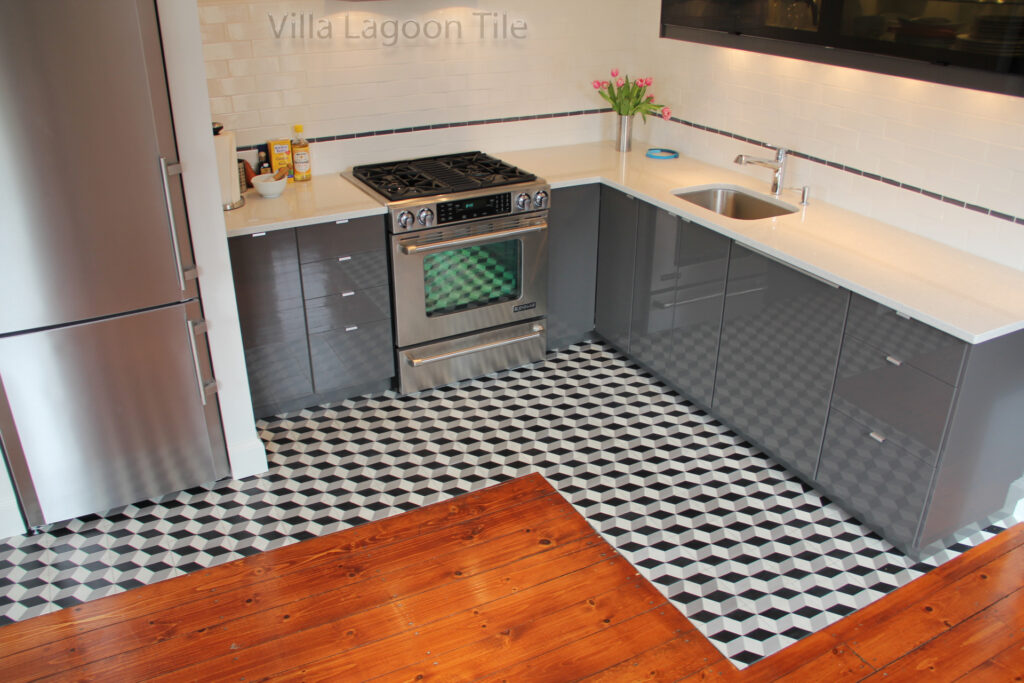
What are Cement Tiles? A Brief History
Cement tiles, also known as encaustic cement tiles, aren’t your typical ceramic or porcelain options. They’re handmade using a hydraulic press to compress layers of colored cement. This process creates intricate patterns and vibrant colors that run throughout the entire tile, not just on the surface. This means the design won’t fade or wear away like printed tiles.
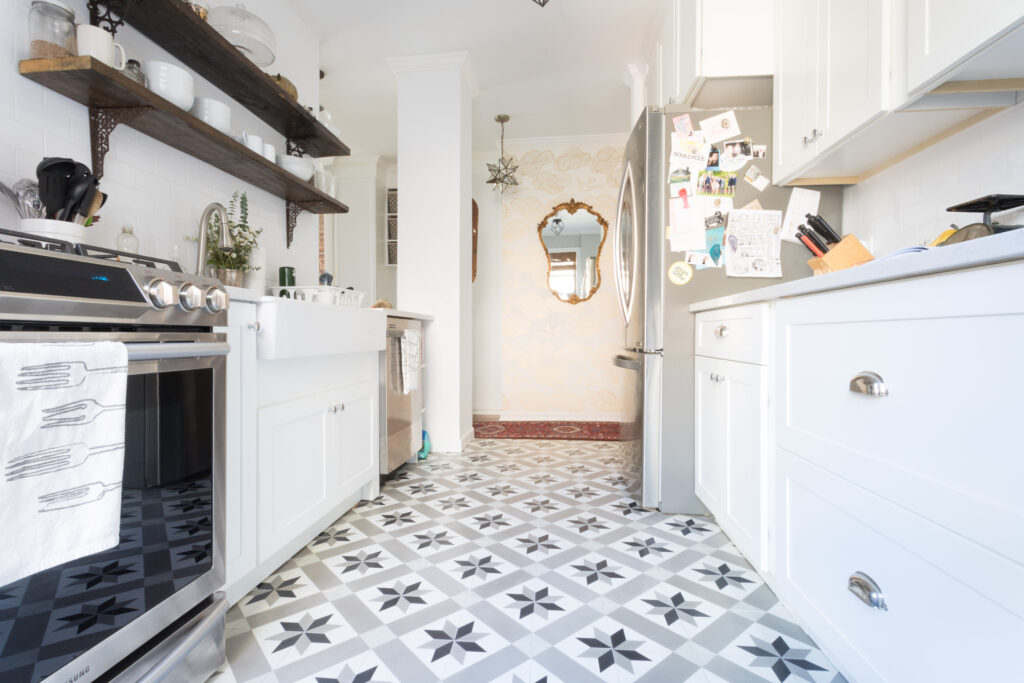
Their origins trace back to mid-19th century Europe, where they gained popularity during the Art Nouveau and Victorian eras. Architects and designers prized them for their ability to create stunning, custom designs at a lower cost than traditional inlaid marble or mosaic. Cement tiles experienced a resurgence in recent years, captivating homeowners and designers alike with their vintage charm and modern appeal.
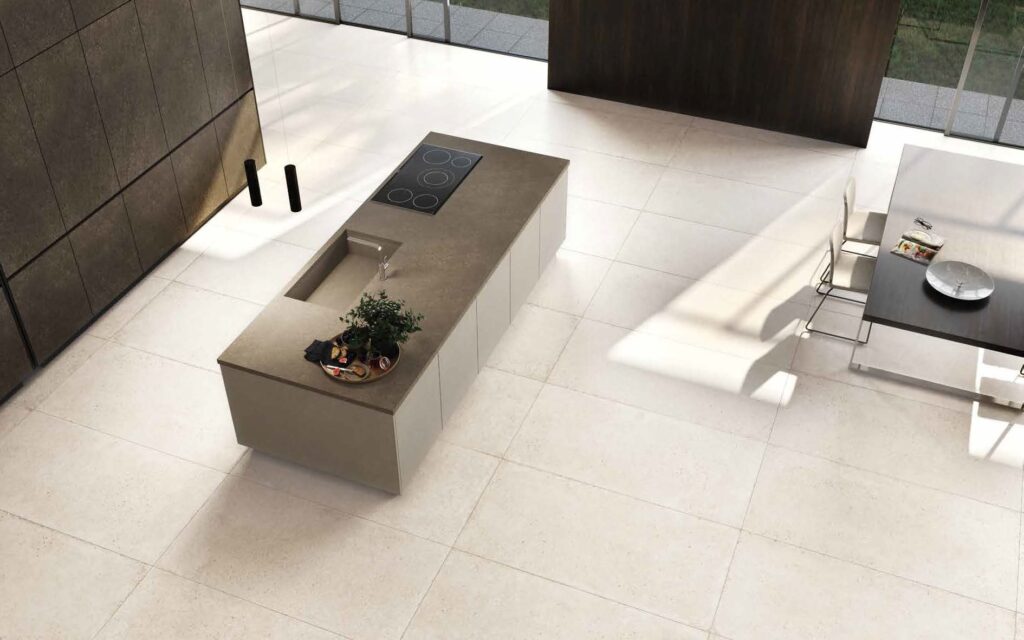
Why Choose Cement Tile for Your Kitchen Floor?
There are numerous reasons why cement tiles make an excellent choice for kitchen flooring. Let’s explore some key advantages:
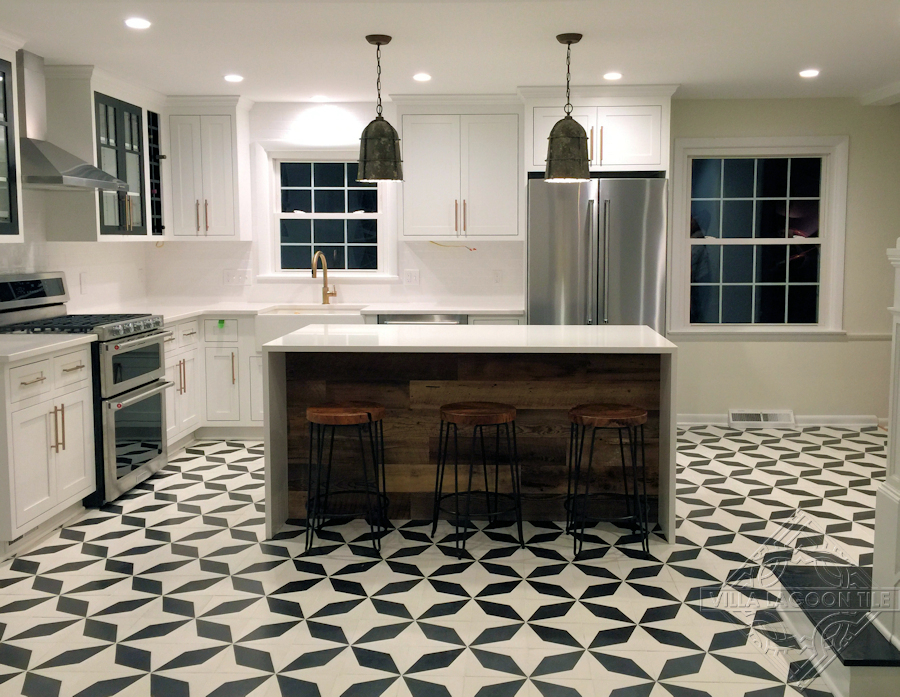
- Unparalleled Style and Design Versatility: Cement tiles come in an endless array of patterns, colors, and shapes. From intricate geometric designs and floral motifs to bold, contemporary graphics, you can find a style that perfectly complements your kitchen’s aesthetic. The handmade nature of these tiles adds a unique, artisanal touch that mass-produced options simply can’t replicate.
- Exceptional Durability: Don’t let the handcrafted appearance fool you – cement tiles are incredibly durable. The dense composition and through-body color make them resistant to scratches, chips, and stains. With proper sealing and maintenance, a cement tile floor can withstand the heavy foot traffic and spills common in a busy kitchen for decades.
- Longevity and Timeless Appeal: Unlike trendy flooring options that quickly fall out of favor, cement tiles possess a timeless quality that transcends fleeting design trends. Their classic patterns and enduring durability ensure your kitchen floor will remain stylish and functional for years to come. They age gracefully, developing a beautiful patina over time that adds to their character.
- Eco-Friendly Option: Cement tiles are often considered a more sustainable flooring choice than many alternatives. They’re typically made using natural materials like cement, sand, and mineral pigments. The manufacturing process requires less energy than firing ceramic or porcelain tiles, reducing its environmental impact. Look for manufacturers that prioritize sustainable practices and use recycled materials.
- Suitable for Radiant Heating: Cement tiles have excellent thermal conductivity, making them an ideal choice for kitchens with radiant floor heating. They efficiently transfer heat, keeping your feet warm and cozy during chilly mornings.
- Easy to Clean and Maintain (with proper sealing): While cement tiles require sealing to protect them from stains and moisture, routine cleaning is simple. Regular sweeping and mopping with a pH-neutral cleaner are usually sufficient to keep your floor looking its best.
Potential Drawbacks to Consider
While cement tiles offer numerous advantages, it’s important to be aware of potential drawbacks before making a decision:
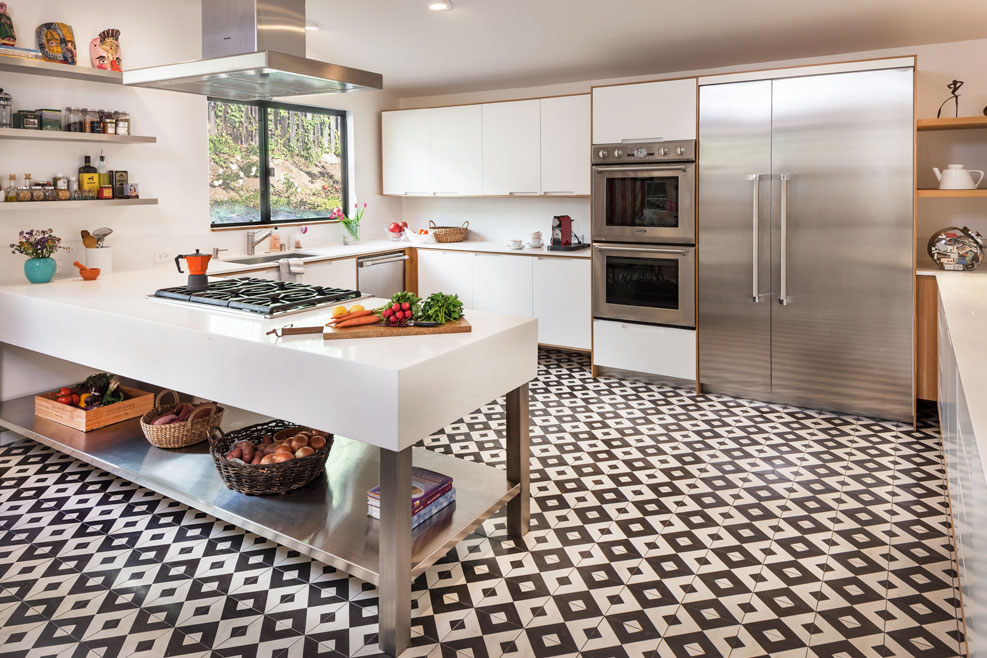
- Higher Initial Cost: Cement tiles typically cost more upfront than ceramic or porcelain tiles. The handmade nature of these tiles and the intricate manufacturing process contribute to the higher price point. However, consider the long-term value and durability they offer when evaluating the overall cost.
- Sealing is Essential: Cement tiles are porous and require sealing to protect them from stains, moisture, and etching. The sealing process involves applying a penetrating sealer and, in some cases, a topical sealer to create a protective barrier. Re-sealing may be necessary every few years, depending on the sealer used and the level of foot traffic.
- Susceptibility to Etching from Acids: Cement tiles are vulnerable to etching from acidic substances like lemon juice, vinegar, and certain cleaning products. Always wipe up spills immediately and avoid using harsh chemicals or abrasive cleaners.
- Color Variations: Due to the handmade nature of cement tiles, slight variations in color and pattern are common. This is part of their charm and adds to their unique character. However, it’s important to order enough tiles from the same batch to minimize noticeable differences.
- Installation Requires Skill: Installing cement tiles properly requires experience and attention to detail. Uneven subfloors, improper grout lines, or inadequate sealing can lead to problems down the road. It’s best to hire a professional tile installer with experience working with cement tiles.
Exploring Cement Tile Styles and Designs for Kitchens
The design possibilities with cement tiles are virtually limitless. Here are some popular styles and design ideas to inspire your kitchen renovation:
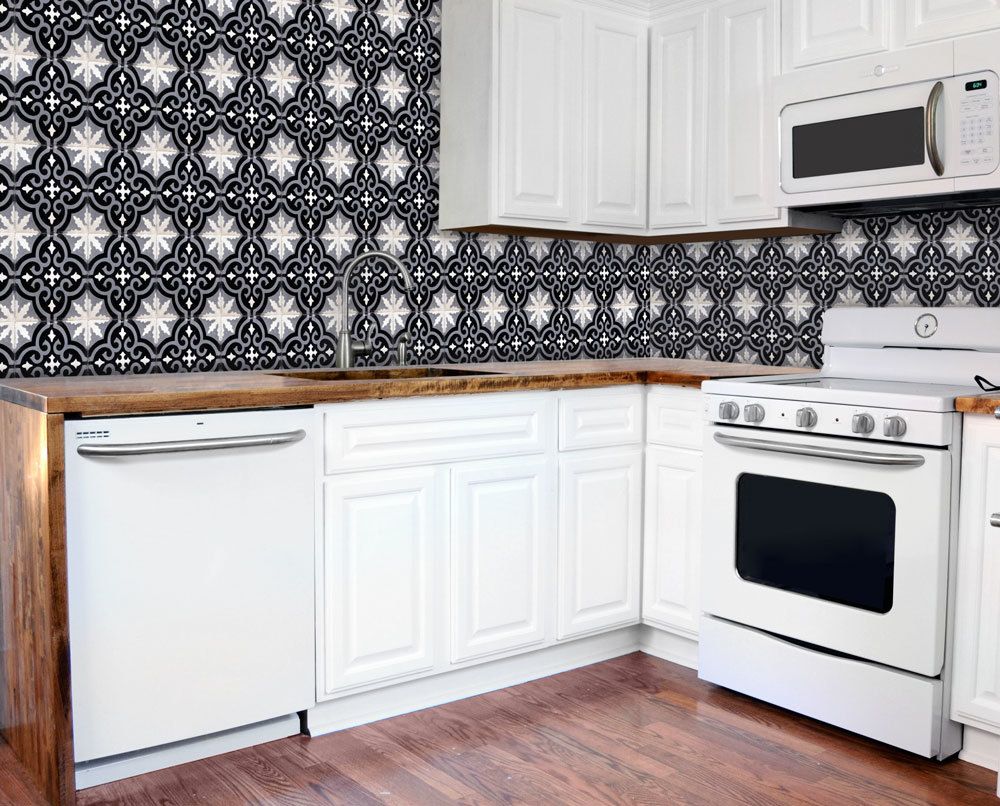
- Geometric Patterns: Geometric patterns like chevrons, hexagons, and diamonds add a modern and sophisticated touch to any kitchen. They can be used to create bold focal points or subtle, repeating designs.
- Floral Motifs: Floral patterns bring a touch of elegance and romance to the kitchen. From delicate, vintage-inspired designs to bold, contemporary blooms, there’s a floral pattern to suit every taste.
- Moroccan-Inspired Designs: Moroccan-inspired patterns, with their intricate geometric shapes and vibrant colors, create a warm and exotic atmosphere. They’re perfect for kitchens with a global or bohemian flair.
- Solid Colors: Don’t underestimate the power of solid-colored cement tiles. They can be used to create a clean, minimalist look or to highlight other design elements in the kitchen. Solid-colored tiles also provide a versatile backdrop for bolder patterns on backsplashes or walls.
- Border Patterns: Using border patterns around the perimeter of the room or to define specific areas, such as the kitchen island, can add visual interest and definition to the space.
- Patchwork Designs: Create a unique and eclectic look by combining different cement tile patterns and colors in a patchwork design. This is a great way to use up leftover tiles or to add a personal touch to your kitchen floor.
Planning Your Cement Tile Kitchen Floor: Key Considerations
Before you embark on your cement tile kitchen floor project, consider these important factors:
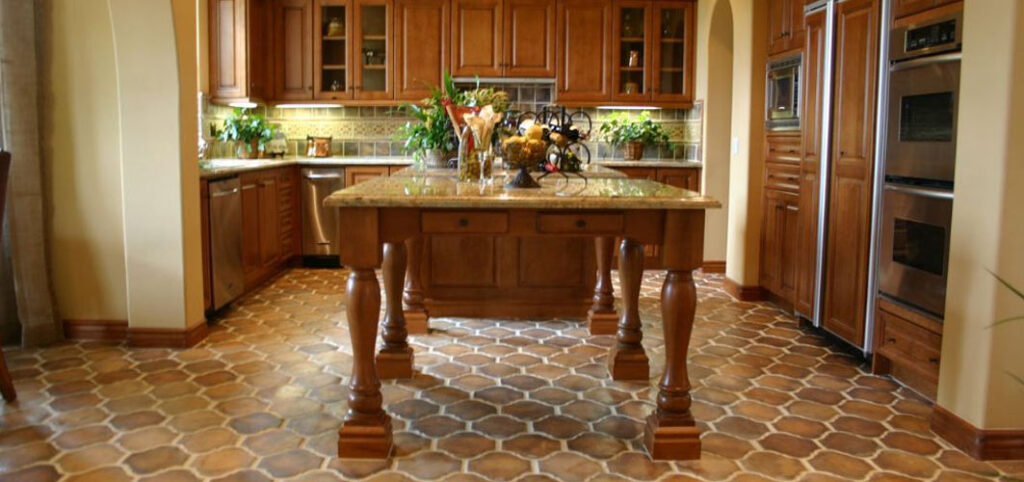
- Kitchen Size and Layout: The size and layout of your kitchen will influence the size and pattern of the tiles you choose. Smaller kitchens may benefit from smaller-scale patterns, while larger kitchens can handle bolder, more dramatic designs.
- Existing Décor and Style: Choose cement tile patterns and colors that complement your existing kitchen décor and style. Consider the color of your cabinets, countertops, and backsplash when making your selections.
- Budget: Factor in the cost of the tiles, installation, sealing, and ongoing maintenance when determining your budget. Get quotes from multiple suppliers and installers to compare prices.
- Traffic and Usage: Consider the amount of foot traffic your kitchen floor will endure. High-traffic areas may require darker-colored tiles or patterns that are more forgiving of wear and tear.
- Subfloor Preparation: A level and stable subfloor is essential for a successful cement tile installation. Ensure your subfloor is properly prepared before the tiles are installed.
Cement Tile Installation: A Step-by-Step Guide
While it’s always recommended to hire a professional installer, here’s an overview of the cement tile installation process:

- Subfloor Preparation: The subfloor must be clean, level, and structurally sound. Any imperfections or unevenness should be addressed before installation begins. A self-leveling compound may be necessary to create a perfectly flat surface.
- Layout and Planning: Carefully plan the layout of your tiles, considering the pattern, grout lines, and any border designs. Dry-lay the tiles to ensure proper alignment and spacing.
- Mortar Application: Use a high-quality modified thin-set mortar specifically designed for cement tiles. Apply the mortar evenly to the subfloor using a notched trowel.
- Tile Placement: Carefully place the tiles onto the mortar bed, pressing firmly to ensure proper adhesion. Use spacers to maintain consistent grout lines.
- Cutting Tiles: Use a wet saw to cut tiles to fit around edges and corners. Take care to avoid chipping or cracking the tiles.
- Curing: Allow the mortar to cure for the recommended time (usually 24-48 hours) before grouting.
- Grouting: Apply grout evenly to the tile joints, using a grout float. Remove excess grout with a damp sponge.
- Sealing: After the grout has cured, clean the tiles thoroughly and apply a penetrating sealer, following the manufacturer’s instructions. A topical sealer may also be applied for added protection.
- Cleaning and Polishing: After the sealer has dried, clean the tiles with a pH-neutral cleaner and buff with a soft cloth.
Maintaining Your Cement Tile Kitchen Floor: Keeping It Beautiful for Years
Proper maintenance is crucial to preserving the beauty and longevity of your cement tile kitchen floor:
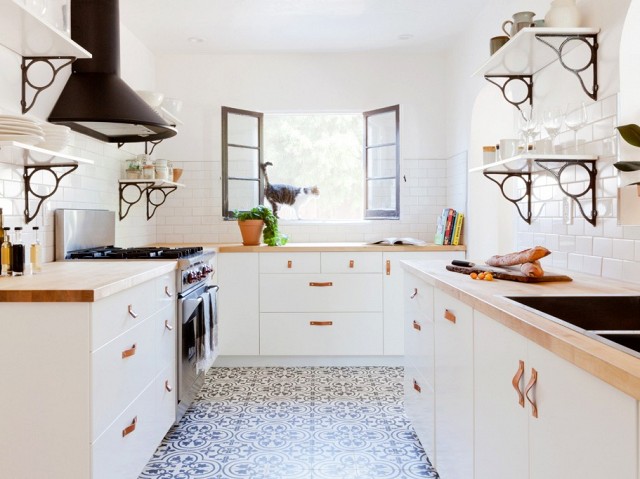
- Regular Cleaning: Sweep or vacuum your floor regularly to remove dirt and debris. Mop with a pH-neutral cleaner designed for cement tiles.
- Avoid Harsh Chemicals: Never use acidic cleaners, bleach, ammonia, or abrasive cleaners on cement tiles. These substances can damage the sealer and etch the surface of the tiles.
- Wipe Up Spills Immediately: Clean up spills promptly to prevent staining. Acidic spills like lemon juice, vinegar, and wine should be wiped up immediately to avoid etching.
- Use Mats and Rugs: Place mats or rugs in high-traffic areas, such as near the sink and stove, to protect the floor from scratches and wear.
- Re-Sealing: Re-seal your cement tile floor every few years, depending on the sealer used and the level of foot traffic. Consult with a professional tile installer for recommendations on the best sealer for your floor.
- Protect Against Scratches: Use furniture pads under the legs of tables and chairs to prevent scratches. Avoid dragging heavy objects across the floor.
Finding the Right Cement Tiles and Installer
Choosing the right cement tiles and installer is essential for a successful kitchen renovation. Here’s how to find the best options for your needs:
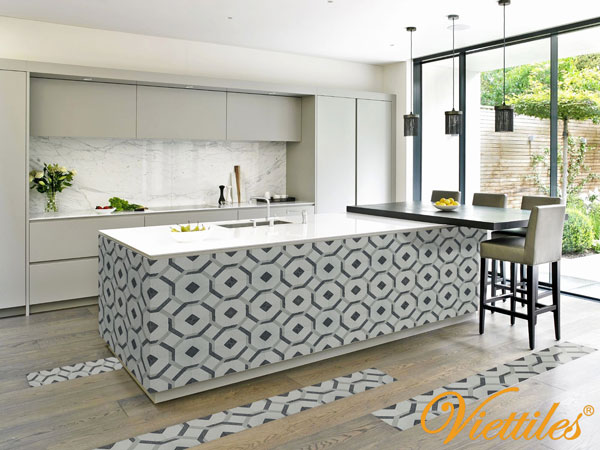
- Research Suppliers: Look for reputable cement tile suppliers with a wide selection of patterns, colors, and styles. Read online reviews and compare prices.
- Order Samples: Order samples of your favorite tiles to see how they look in your kitchen’s lighting and with your existing décor.
- Check for Quality: Inspect the tiles for any imperfections or inconsistencies in color and pattern. Ensure the tiles are properly sealed and finished.
- Hire a Professional Installer: Choose a tile installer with experience working with cement tiles. Ask for references and review their portfolio.
- Get a Written Contract: Before work begins, get a written contract outlining the scope of the project, the timeline, the cost, and any guarantees.
Cement Tile Kitchen Floor: Is It Right for You?
Ultimately, the decision of whether or not to install a cement tile kitchen floor depends on your personal preferences, budget, and lifestyle. If you appreciate timeless elegance, durability, and design versatility, cement tiles may be the perfect choice for your culinary space. By carefully considering the advantages and disadvantages, planning your project thoroughly, and working with reputable suppliers and installers, you can create a stunning and functional kitchen floor that will last for years to come.
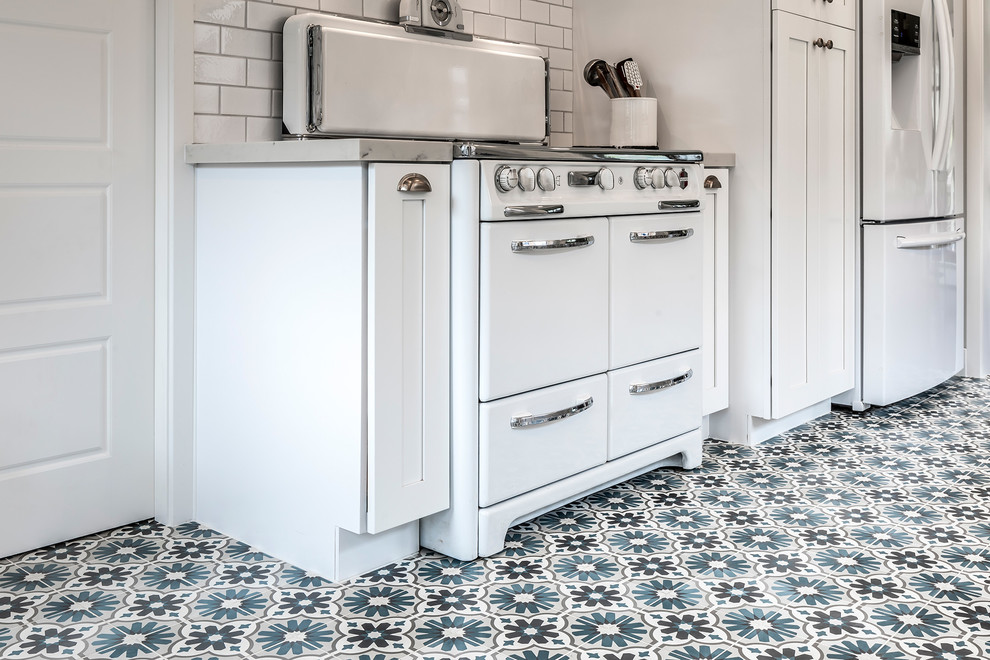
Beyond the Floor: Cement Tile Accents in the Kitchen
While cement tiles are a fantastic choice for flooring, don’t limit their use to just the ground! Consider incorporating them as accents in other areas of your kitchen to create a cohesive and stylish look:
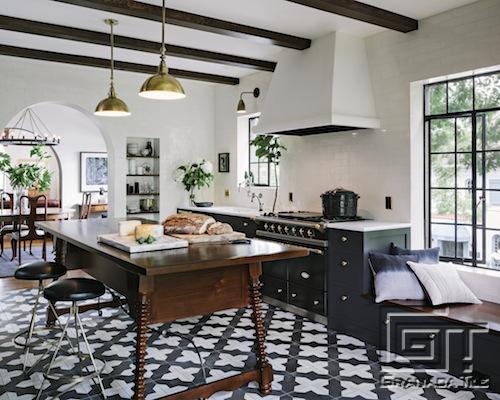
- Backsplash: A cement tile backsplash can add a pop of color and pattern to your kitchen, complementing your flooring or serving as a focal point. Choose a design that ties in with your overall aesthetic.
- Kitchen Island: Use cement tiles to clad your kitchen island, creating a unique and eye-catching feature. This is a great way to add texture and visual interest to a large, central element in your kitchen.
- Accent Wall: Create a stunning accent wall using cement tiles. This works particularly well in open-concept kitchens to define the space and add a touch of personality.
- Niche or Alcove: Incorporate cement tiles into a niche or alcove to create a decorative focal point. This is a subtle yet effective way to add visual interest to your kitchen.
- Countertop Inlay: Consider adding a cement tile inlay to your countertop for a unique and personalized touch. This requires careful planning and execution but can result in a stunning and one-of-a-kind design.
Cement Tiles and Kitchen Design Styles: A Perfect Match
Cement tiles are incredibly versatile and can complement a wide range of kitchen design styles. Here are a few examples:
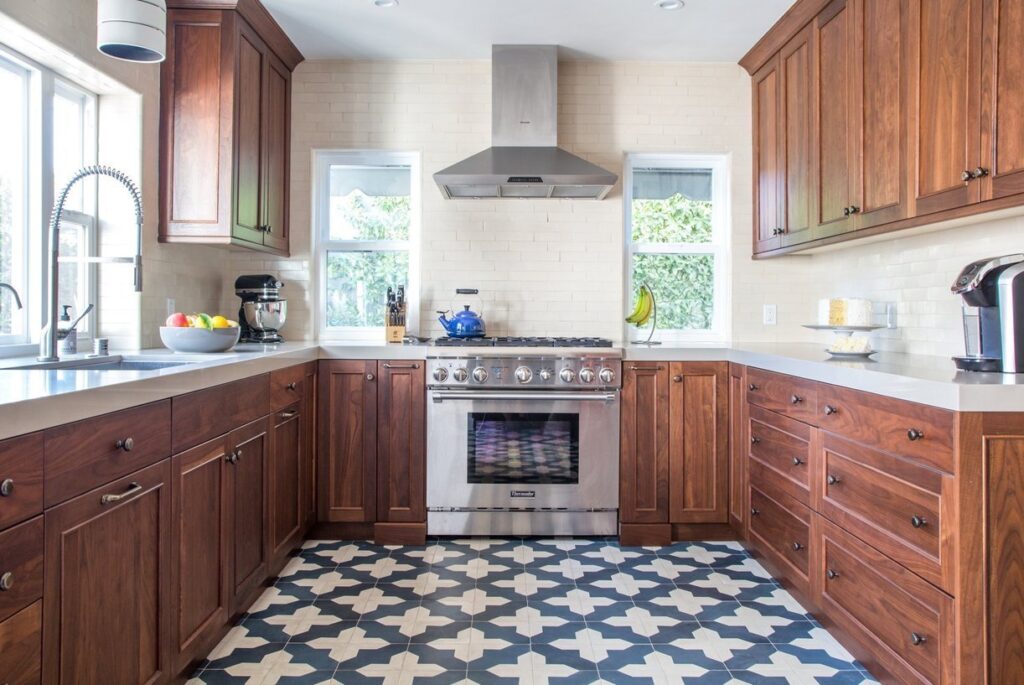
- Modern: Geometric patterns, bold colors, and clean lines make cement tiles a great choice for modern kitchens.
- Traditional: Vintage-inspired floral motifs and classic patterns add a touch of elegance and charm to traditional kitchens.
- Bohemian: Moroccan-inspired designs, eclectic patterns, and vibrant colors create a warm and inviting atmosphere in bohemian kitchens.
- Farmhouse: Rustic patterns, neutral colors, and distressed finishes complement the cozy and inviting feel of farmhouse kitchens.
- Mediterranean: Warm colors, intricate patterns, and natural textures create a relaxing and inviting atmosphere in Mediterranean kitchens.
Conclusion: Invest in Timeless Beauty with Cement Tile
A cement tile kitchen floor is an investment in timeless beauty, exceptional durability, and enduring style. While the initial cost may be higher than some alternatives, the long-term value and unique character of cement tiles make them a worthwhile choice for homeowners who appreciate quality craftsmanship and distinctive design. With proper planning, installation, and maintenance, your cement tile kitchen floor will provide you with years of enjoyment and become a cherished feature of your home.
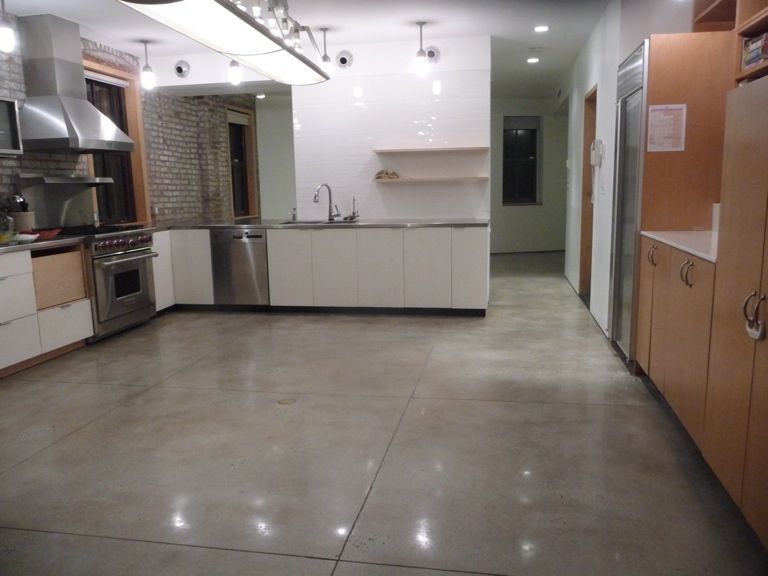
 Nimila
Nimila
